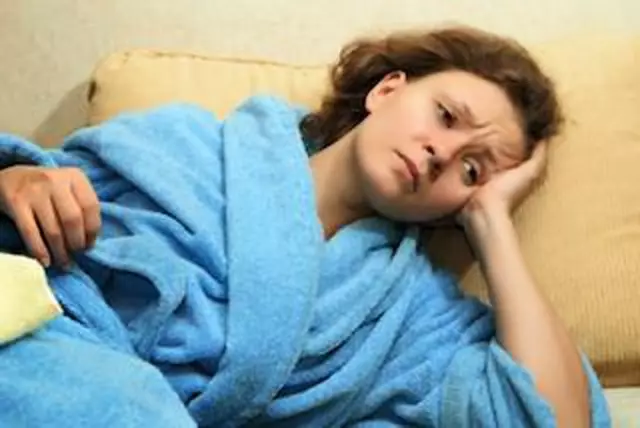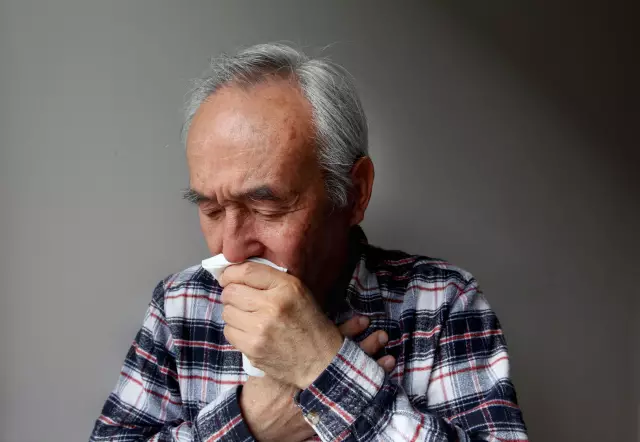- Author Rachel Wainwright [email protected].
- Public 2023-12-15 07:39.
- Last modified 2025-11-02 20:14.
Apnea
Apnea is the stopping of breathing. The reason for the cessation of respiratory movements can be various diseases (status asthma, whooping cough, pneumonia), hyperventilation of the lungs with increased breathing, poisoning with some toxic substances. The term apnea is also sometimes referred to as voluntary holding of the breath. It is the conscious holding of the breath that is the basis of the entire theory and practice of diving without special breathing equipment. Man is one of the few mammals capable of conscious sleep apnea.
Untrained people are able to hold their breath for up to 30-40 seconds. A practicing diving diver is sometimes able not to breathe for 5-6 minutes.
Sleep apnea
The most important for medicine today is the apnea syndrome, which is characterized by respiratory arrest during sleep. The cause of this condition may be either narrowing of the airways during sleep, or dysregulation of breathing by the structures of the central nervous system.
In obstructive sleep apnea, the oropharynx collapses due to negative pressure in the respiratory system during inspiration. Sleep apnea is accompanied by cessation of breathing for an average of 20-30 seconds, although sometimes this interval increases to 3 minutes. Such episodes can be repeated up to several hundred times per night, and each time the person wakes up for a moment. Predisposing factors for sleep apnea in adults are adenoids, facial anomalies of the skull bones, macroglossia, acromegaly and gigantism, nervous and muscle diseases, and hypothyroidism. But most patients do not have any of these conditions, and the obstruction is caused by alcohol intake and obesity. Alcohol reduces the tone of the pharyngeal muscles, especially when combined with a chronic rhinitis and congenital narrowness of the oropharynx.
Consequences of apnea syndrome
Sleep apnea is a cause of sleep disturbance and oxygen deprivation. The clinical picture of the disease in adults is usually represented by daytime sleepiness, memory impairment, decreased intelligence, pulmonary hypertension, heart disorders, heart rhythm interruptions, increased blood pressure, erythrocytosis. In adults and children, the most severe complication of apnea syndrome is complete respiratory arrest, cardiac arrhythmias and death of the patient.
Sleep apnea diagnostics
Sometimes patients do not know about the problem for a long time, because after waking up in the morning, there are no memories of sleep apnea. Close relatives can tell such patients about episodes of respiratory arrest at night. The clinical picture of apnea syndrome grows slowly, so many people associate complaints with general aging of the body or other reasons. Apnea syndrome can be suspected with a combination of snoring and daytime sleepiness. Observing the patient during sleep can confirm the diagnosis. However, somnography is considered the reference diagnostic method. During the study, an electroencephalogram, electromyography and registration of eye movements are performed in a continuous mode. Additional equipment allows you to monitor the concentration of oxygen in the blood during sleep. The indications for this expensive examination can be considered:severe drowsiness during the day, pulmonary hypertension, erythrocytosis. With an already diagnosed apnea, somnography allows evaluating the effectiveness of the therapy and choosing a breathing mode under constant positive pressure, if necessary.
Apnea treatment
In simple cases, the treatment of apnea syndrome consists of reducing body weight to normal, refusing to drink, and treating chronic rhinitis. All patients are advised to sleep on their side. When choosing a treatment for apnea, it is necessary to assess the risk factors and, if possible, exclude their influence. In severe cases, patients are hospitalized for examination and selection of instrumental treatment.
The most effective method of therapy is considered to be mask breathing under constant positive pressure using a special apparatus. Of course, most patients find it difficult to get used to the inconveniences of such apnea treatment. Some patients are greatly disturbed by the noise of the apparatus, while others find it difficult to fall asleep with a breathing mask on their face. The medical industry produces modern devices where discomfort for the patient is minimized. Another area of therapy is mechanical fixation devices that are inserted into the mouth to move the lower jaw forward. In rare extremely severe cases, tracheostomy surgery may be performed to treat apnea. The indication for such an intervention is considered to be arrhythmia and the threat of respiratory arrest.
Apnea in children

Apnea is rare in children. On the other hand, in infancy, severe episodes of respiratory arrest of a mixed nature are possible, which can lead to the death of the child. Fatalities occur mainly at night. To a greater extent, apnea affects children in the first years of life, who have congenital disorders of the central nervous system of any severity. Parents sometimes accidentally record a child's breathing disorder during nighttime and daytime sleep. At this moment, the skin color becomes cyanotic, reflex muscle twitching is possible, and respiratory movements of the chest are absent. With the progression of hypoxia, loss of consciousness develops.
Adults can help - wake the child up, give a chest massage, artificial respiration and call a pediatrician at home. To prevent apnea in children, it is necessary to regularly ventilate the apartment, not to overheat the child, and put the baby to sleep without a pillow during the first year of life. The fight against viral diseases, breastfeeding and sleep of the child in the same room with the mother play an important role. If the child has already recorded an episode of respiratory arrest, it must be carefully examined in a hospital setting. There are special breathing sensors that are installed in the baby's crib. When breathing stops, the device sends a signal to the parents. Treatment of severe apnea syndrome in children is possible both with the help of positive pressure mask breathing and with the help of drugs. As the child grows older, the risk of apnea and death of the child decreases sharply. Parents should not focus excessively on the baby's breathing, so as not to provoke the development of a neurosis-like state and neurotization of the baby. Remember that a child's breathing can be shallow, faster, or slower. In a healthy child under one year old, pauses in breathing of less than 10 seconds and an uneven breathing rhythm are permissible. In a healthy child under one year old, pauses in breathing of less than 10 seconds and an uneven breathing rhythm are permissible. In a healthy child under one year old, pauses in breathing of less than 10 seconds and an uneven breathing rhythm are permissible.
YouTube video related to the article:
The information is generalized and provided for informational purposes only. At the first sign of illness, see your doctor. Self-medication is hazardous to health!






